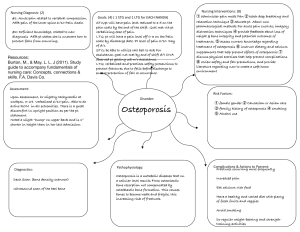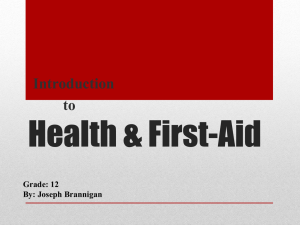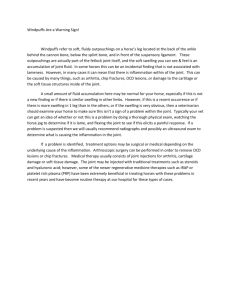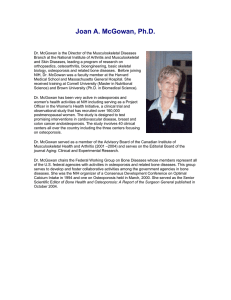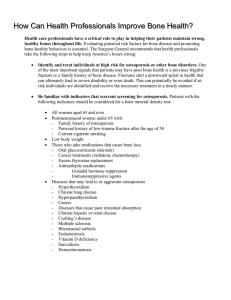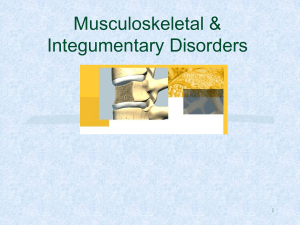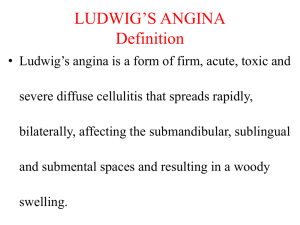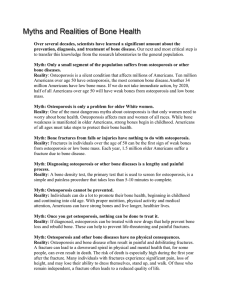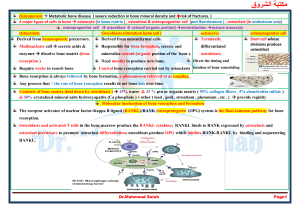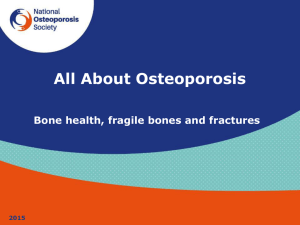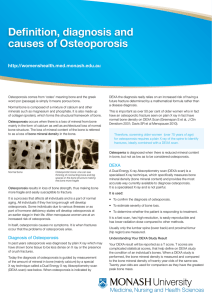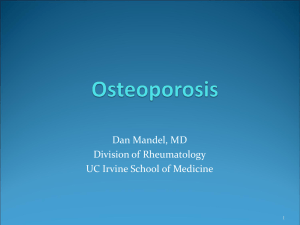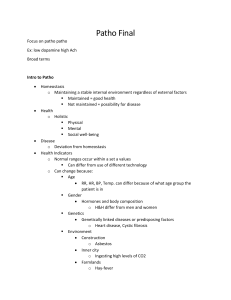Special Conditions Related to Bones and Joints 1. Osteoporosis:
advertisement
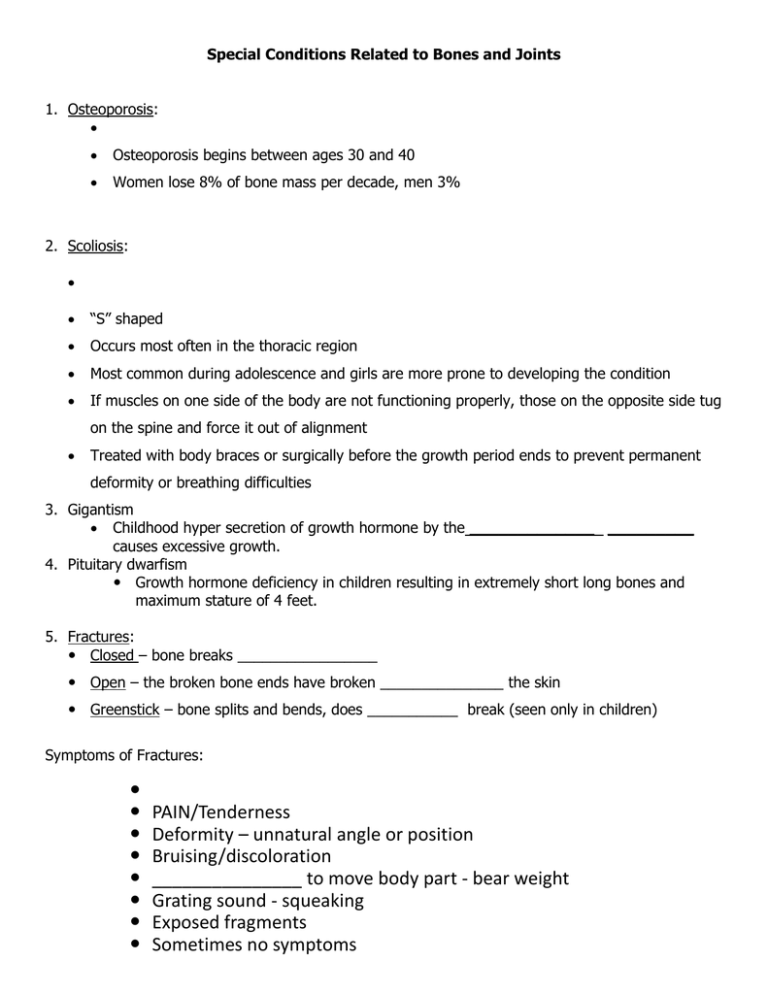
Special Conditions Related to Bones and Joints 1. Osteoporosis: Osteoporosis begins between ages 30 and 40 Women lose 8% of bone mass per decade, men 3% 2. Scoliosis: “S” shaped Occurs most often in the thoracic region Most common during adolescence and girls are more prone to developing the condition If muscles on one side of the body are not functioning properly, those on the opposite side tug on the spine and force it out of alignment Treated with body braces or surgically before the growth period ends to prevent permanent deformity or breathing difficulties 3. Gigantism Childhood hyper secretion of growth hormone by the _____________ _________ causes excessive growth. 4. Pituitary dwarfism Growth hormone deficiency in children resulting in extremely short long bones and maximum stature of 4 feet. 5. Fractures: Closed – bone breaks _________________ Open – the broken bone ends have broken _______________ the skin Greenstick – bone splits and bends, does ___________ break (seen only in children) Symptoms of Fractures: PAIN/Tenderness Deformity – unnatural angle or position Bruising/discoloration _______________ to move body part - bear weight Grating sound - squeaking Exposed fragments Sometimes no symptoms Soft Tissue Injuries 6. Sprains: st Mild (1 degree) – ______________ ligament nd Moderate (2 degree)– partial tear rd Severe (3 degree) – complete tear Symptoms: 1. Swelling 4. 2. 5. 3 7. Strains: Symptoms: 1.Swelling 4. 2. 5. 3 8. Dislocations: Symptoms: 1. Deformity of joint 2. 4. 5. 3 9. Bursitis: inflammation of the sac (bursa) near the joint 10. Tendonitis: inflammation of the tendon 11. Arthritis: Inflammation in and around the joint FIRST AID for SOFT TISSUE INJURIES REST- No weight barring activities ICE - ice for 24 to 48 hours. 20 min. on/ 20 min off Compression - wrap it snug, but not too tight. Elevation- keep the injury elevated. Level with heart.

